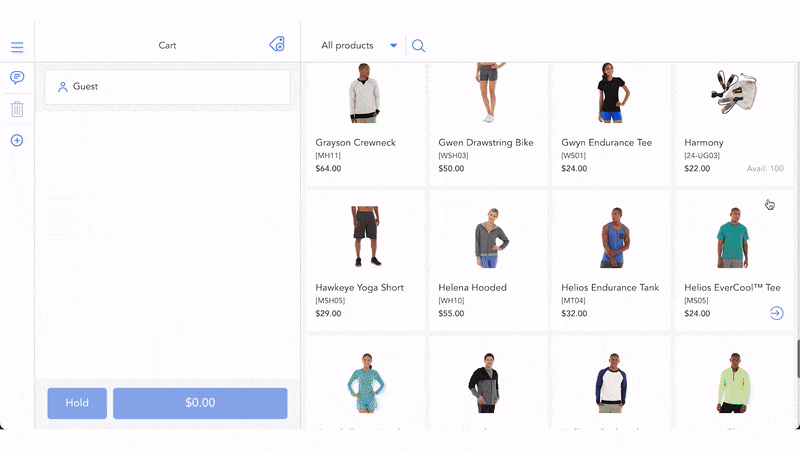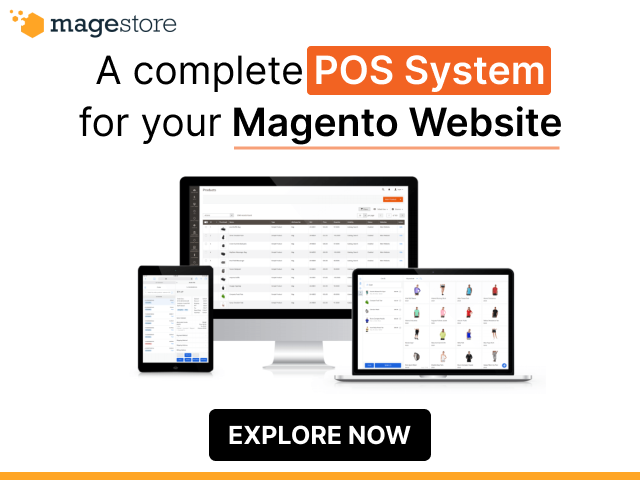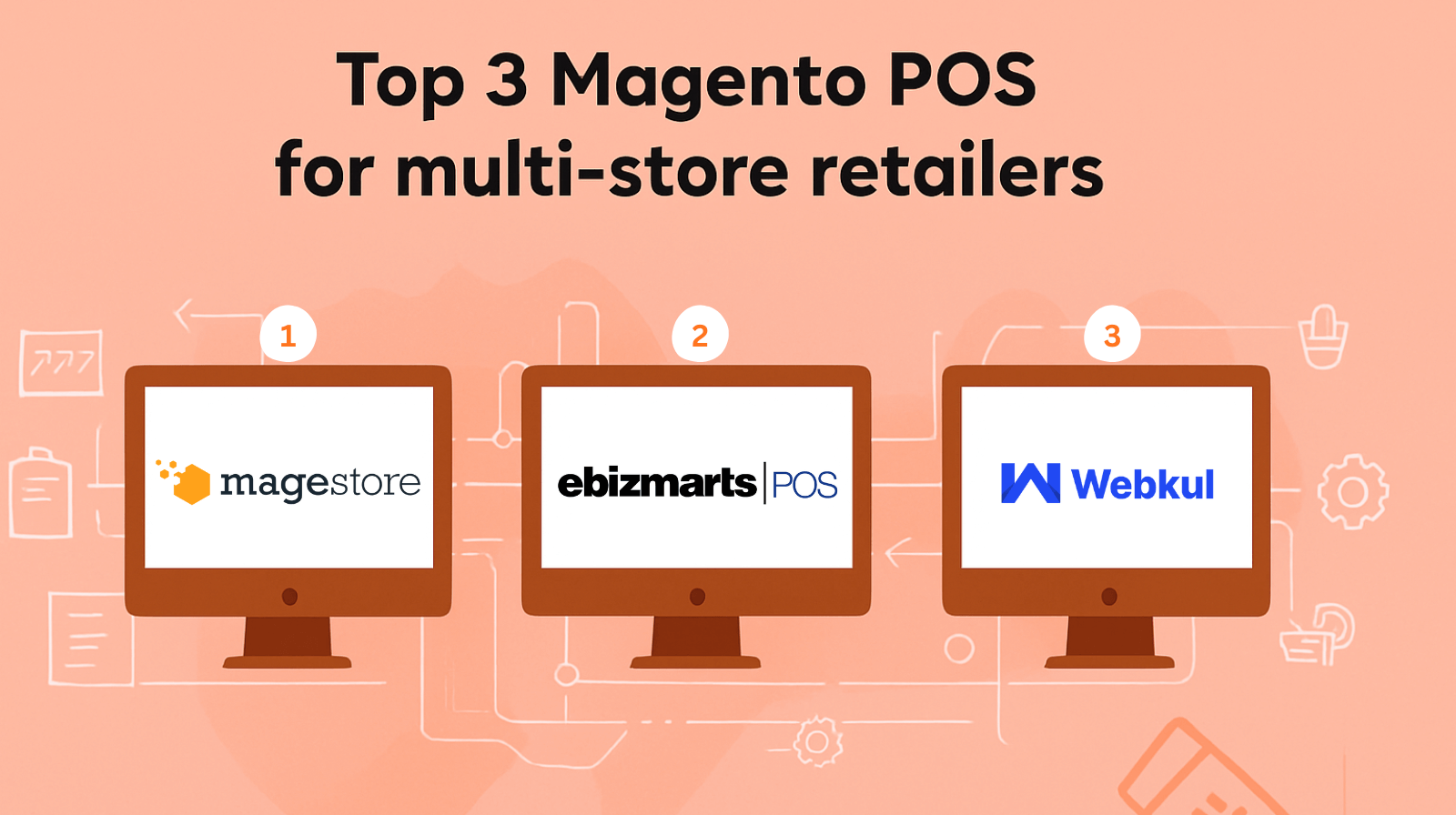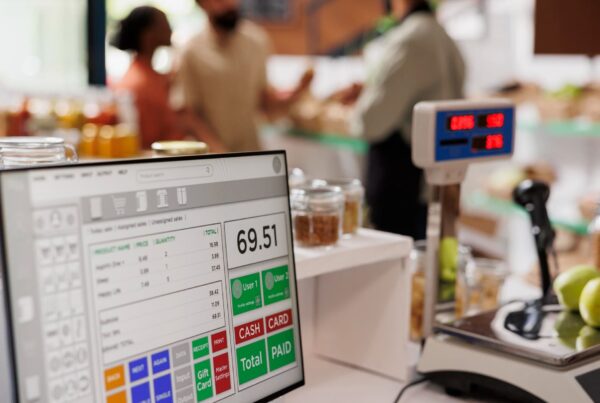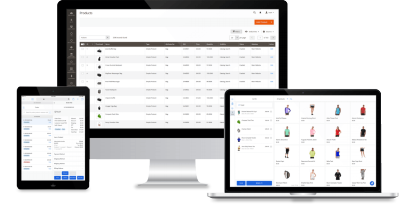Much of your retailing success hinges on how fast and securely you process transactions, as more than half customers surveyed prefer quick digital payments. To accommodate these demands, integrated payments emerge as an optimal solution to elevate customers’ checkout experience.
Integrated payments have become increasingly popular thanks to the many advantages they offer both businesses and customers. In this post, we’ll explore the definition of integrated payments, their benefits for merchants and consumers, and steps to set up integrated payment solutions for your business. Let’s dive in!
What are integrated payments?
Integrated payments are a payment solution where payment processors connect with your business software or platform, such as your website or POS system, to facilitate fast and error-free transaction processing.
Implementing integrated POS payments allows your customers to make payments right on your platform rather than being redirected to another app or site, ensuring a simple and smooth payment experience on a unified interface.
For example, retailers often integrate their POS systems with eCommerce platforms like Magento (Adobe Commerce), Shopify, and with payment processors like PayPal, Adyen, to manage both online and physical stores effectively. With this eCommerce POS payment integration, business owners can accept in-store or online payments and consolidate business data on the Magento backend.
You might like to know: In the retail world, some systems can integrate with any payment processors or payment gateways without being restricted by proprietary technologies, contractual lock-ins, or exclusivity requirements set by any single provider. These are payment processor agnostic systems.
Benefits of integrated payments
Integrated payments are growing in popularity as they’re advantageous to both businesses and customers.
What are the benefits for businesses?
- Accelerate checkout process: Integrated payments automate payment processing, thus making payment acceptance more convenient and efficient. By removing the need for error-prone and time-consuming manual data inputs, you can shorten the waiting lines, serve more customers, increase your revenues, and improve customer satisfaction. For instance, after you use a barcode scanner to add products to the cart at the checkout, the POS automatically calculates the total amount, including any taxes or discounts, and sends it to the payment terminals. The card details are then automatically collected and transferred to the payment processor for authorization and processing.
- Ensure data accuracy: Adding integrated POS payments into your business systems fosters real-time updates of sales, payment, and inventory data across the business. Therefore, you don’t need to waste time and effort reconciling transaction data manually at the end of the day, thus eliminating data discrepancies and ensuring accurate financial reporting.
- Boost efficiency: POS payment integration processes payments quickly and works with other business functions like inventory, accounting, and CRM to sync data instantly across platforms. Consequently, you can streamline operations and optimize efficiency by reducing manual workload and focusing on developing your business.
- Consolidate data for insights: Integrated payments collect and centralize important transaction data from multiple sales channels, such as eCommerce and physical stores, allowing you to observe the sales situation and payment trends closely. On this basis, you can better monitor your cash flow and generate insights into customer behaviors to devise effective marketing or sales strategies.
- Enhance security: Integrated payments are often developed with advanced security technologies and comply with data security standards to safeguard your customers’ sensitive payment data, such as card details and personal information, from security attacks and fraud.
What are the benefits for your customers?
- Complete purchases faster: Integrated POS payments eliminate manual data entry, speeding up the payment processing. Instead of manually entering the card information on the terminals, customers just need to insert, tap, or swipe their cards over the terminals to complete the payments. As a result, your customers can avoid waiting in long queues and check out their orders within seconds.
- Enhance convenience and flexibility: With payment integration, customers can choose their most convenient payment methods, including digital wallets, contactless payments, or credit cards. Besides, they can quickly finish their transactions without leaving your website or app, thus enjoying a smoother payment experience.
- Remove worries about security: Integrated payments offer ultimate data protection by adopting technologies like encryption and tokenization. All transactions are processed within your company systems, minimizing data breaches and other security threats. Therefore, customers will feel safer purchasing from you, thus enhancing their trust and loyalty.
- Access purchase history: Integrated payments solutions enable customers to track their orders, view purchase history, and see receipts to manage their expenses and budgets.
Alternatives to integrated payments
Despite the growth of integrated payments, some companies are still using other alternative solutions to handle customer transactions, particularly manual processing, hosted payment gateways, and standalone payment processing software.
Manual payment processing
This solution requires users to input transaction information into a payment terminal or processing software, accept cash, provide invoices, or perform other tasks by hand to complete the orders. Manual payments often take longer to process and might entail human errors. They’re also more vulnerable to fraud if no proper authentication procedures are in place. Cash, checks, bank transfers, and card-not-present transactions are some main manual payment types.
For example, when a customer provides card details over the phone to make a purchase, you have to manually enter the information on the POS system to process the sale.
Hosted payment gateways
A hosted payment gateway is a secure payment page offered by a payment service provider to handle online payments. Using these gateways means you entrust an external party with payment processing and data management. Instead of making payments on your websites, customers will be sent to a separate payment page offered by the provider to enter their card details and complete their transactions.
In this way, the service provider manages and stores customer payment information, reducing your compliance responsibilities with industry standards like PCI DSS while still ensuring data security. However, as the transaction process happens outside your platform, you’ll lose control over the user experience and suffer higher risks of abandoned carts.
PayPal and Amazon Pay are two examples of hosted payment gateways.
Standalone payment software
Standalone payment processing software functions independently without integrating with other business systems. These solutions are affordable and simple to use, so you can quickly set up and start taking payments. However, you need to switch between different business apps to complete payments and key transaction amounts, which causes lots of annoyance and inconvenience. Besides, the lack of integration makes it impossible to sync sales and inventory automatically, leading to data errors, discrepancies, and an inability to extract a live view of your business situation.
Adyen terminals are an example of a standalone payment processing solution that can work without combining with a POS system.
>>> Compare POS and terminals
How are embedded, non-integrated, semi-integrated, and integrated payments different?
Integrated vs non-integrated payments
Integrated payments connect directly with POS software or other business functions to send payment details automatically for fast processing and recording, thus elevating the checkout experience. The link between the payment system and others also allows live updates of sales, inventory, and customer information, giving you accurate and real-time data for business insights.
Otherwise, non-integrated payments perform separately from other business operations. As a result, you have to calculate and input the transaction data by hand, thereby slowing down the checkout process and causing potential errors. No connection between payment and other systems might hurt your efficiency, waste time and labor, and dissatisfy your customers.
For instance, after scanning the product at the POS, the cashier has to enter the total amount on a payment terminal to finish the process, as the two systems don’t communicate to transfer the information.
Semi-integrated vs integrated payments
For integrated card payments, the payment platform integrates fully with your POS app to facilitate direct communication between them. Therefore, the transaction details flow from the payment terminals straight to your POS for processing, all within a closed environment, thus lowering the data exposure to external threats. The POS is also responsible for PCI compliance and payment, and customer data protection.
Things are a bit different for semi-integrated payments. In this case, the payment terminals pass payment data directly to the payment service provider to handle the transactions, then inform the POS of the results with non-sensitive information. Consequently, it’s the payment processor who has to bear the PCI compliance responsibilities, not the POS system.
For example, Global Payments offers semi-integrated terminals that can work with POS software like Magestore POS to complete sales.
Embedded vs integrated payments
Integrated payment systems link with the POS software through APIs. Literally, the POS and the payment processor are from two separate providers. Put it in other words, you have to rely on an external party for payment processing, which might complicate the business workflows, especially when there is an error.
For embedded payment solutions, payment processing is natively built into your existing app, platform, or website. Thanks to this, customers don’t have to leave your app or website to make a payment, so they can enjoy a seamless, convenient, and uninterrupted user experience. In addition, embedded payments help you diminish the dependence on an external party to solve issues, as you only need to deal with one system, instead of multiple vendors using APIs.
For example, Shopify Payments is an embedded payment solution that lets Shopify merchants accept and process payments on their Shopify stores.
Take a look at the table below to understand which one is the best option for your business.
Solution | Pros | Cons | Best use cases |
Integrated payments |
|
| Businesses selling across channels with high order volumes that need to auto-sync and centralize data. |
Non-integrated payments |
|
| Small businesses with tight budgets that only need a way to accept credit cards besides cash or checks. |
Semi-integrated payments |
|
| Businesses that want to enhance security while reducing PCI compliance responsibility. |
Embedded payments |
|
| Businesses with financial resources that want to have full control over the payment processes |
How to implement integrated payments in your company?
You can follow the steps below to employ business-integrated payments for your company.
- Assess your business situation: In the first place, you should look into your business situation to identify the exact payment needs and assess your finances. This will lay the foundation for your choice of payment service partner in the next step to best serve your business purposes.
- Choose a payment processor: You should consider several factors to select a suitable integrated payments software for your company.
- Payment methods supported: You should check to see what payment types the processor provides. Ideally, your chosen solution should support popular payment methods, such as credit and debit cards, contactless payments, digital wallets, and other options that fit your customers’ needs.
- Additional features: Decide which extra features you expect the processor to have to satisfy your business requirements. For example, you might want a payment platform that has advanced analytics and reporting tools or supports many local payment methods.
- Integration capability: Make sure the integrated payments partner you opt for can work well with your current tech stack, including your POS system. The compatibility between these platforms reduces the risks of errors, glitches, and other technical issues that might disrupt your business operations.
- Fee structures: It’s worth researching the pricing structure of the payment service provider to see if it suits your financial conditions. You’d better check which pricing model the processor adopts: flat-rate, volume-based, subscription, etc., and evaluate carefully to avoid hurting your profits in the long run.
- Security: The payment service provider of your choice should ensure safety and security for all of your transactions. Learn about the technologies they use to protect payment and customer details and whether they comply with security standards or not.
- Set up the integrated payments: Below is a typical procedure to implement integrated payments. You should consult your chosen payment processor for detailed instructions.
- Create an account with your chosen payment processor. You’ll need to provide some information about your business, depending on your go-to payment solution.
- Look for APIs provided by the payment processor for integration with other apps and systems.
- Integrate your preferred payment service provider with your mobile app or website using APIs to accept online payments. For in-store payments, you’ll need to pair your POS software with the processor and set up payment terminals and other devices.
To ensure smooth operations, your POS should be compatible with your chosen payment processors and terminals to avoid any technical conflicts. Magestore offers Magento POS and Shopify POS that can connect seamlessly with unlimited payment service providers, catering to both your current and future needs with optimal expenses. - Test the integration to make sure they connect seamlessly with each other for payment acceptance and fix any arising problems.
- Launch your integrated payment systems and seek support when you need it.
Future of integrated payments
The integrated payments are expected to keep evolving in the future, with the revenue of the global payments industry expected to increase and reach $3.1 trillion in 2028, along with the growing share of Independent Software Vendors (ISVs) solutions specific to different industries and sectors. The payment service providers collaborate with the ISVs to offer businesses tailored payment functionality that matches their unique operational needs. With these integrated payment systems, merchants can process payments on their currently used software, providing their customers with a more secure, seamless, and flexible shopping experience and driving up revenues.
For example, a retailer can integrate a payment module that allows them to manage subscriptions or automate rebilling. Nevertheless, both ISVs and other software providers should always adapt their solutions to keep up with the ever-changing consumer preferences and business demands.
Also, according to Forbes, more IoT devices, besides phones, will pair with the integrated payment systems using APIs to authorize payments automatically. This will simplify the purchasing; however, demand for more integration protocols and industry standards to enable effective data sharing between platforms and devices.
Despite the benefits that businesses might obtain from POS integrated payments, these solutions often require considerable investments in human resources and technologies. Therefore, merchants should consider accompanying costs and risks carefully.
Conclusion
Integrated payments enable users to process payments quickly and securely via diverse payment methods. They can also work in harmony with other systems to promote data flows for accurate and real-time insights, contributing to efficiency improvement and customer satisfaction. Because of the advantages these solutions, including B2B integrated payments, give businesses, they show clear signs of further development in the future. To stay competitive, you should incorporate payments into your systems. Remember to examine your business needs to choose the most appropriate payment processor and follow several steps to finish the setup.
FAQs
1. What is an integrated payment processor?
An integrated payment processor is the one that can connect with other business software or systems to process payments and sync data.
2. POS vs payment processor: What are the differences?
While payment processors focus on delivering payment processing and financial services, POS has various features to help merchants manage many other business aspects, including inventory, orders, and customers.
3. What are ERP-integrated payments?
ERP-integrated payments are payment processing software that can connect with an Enterprise Resource Planning (ERP) system to handle payments and transfer data.
4. Can I still choose my payment processor, or am I locked into one provider?
You can choose a payment processor based on your business requirements. Make sure to learn about their offering before making a final decision.
5. Are integrated payments secure and PCI-compliant for in-store and online transactions?
Yes, integrated payments comply with PCI compliance and ensure security for online, in-store, and unified payments.
6. Will integrated payments help me save time on reporting and accounting?
Yes, as integrated payments automatically send transaction data to other systems, including POS and accounting software, you can save lots of time for manual inputs and data reconciliation.

